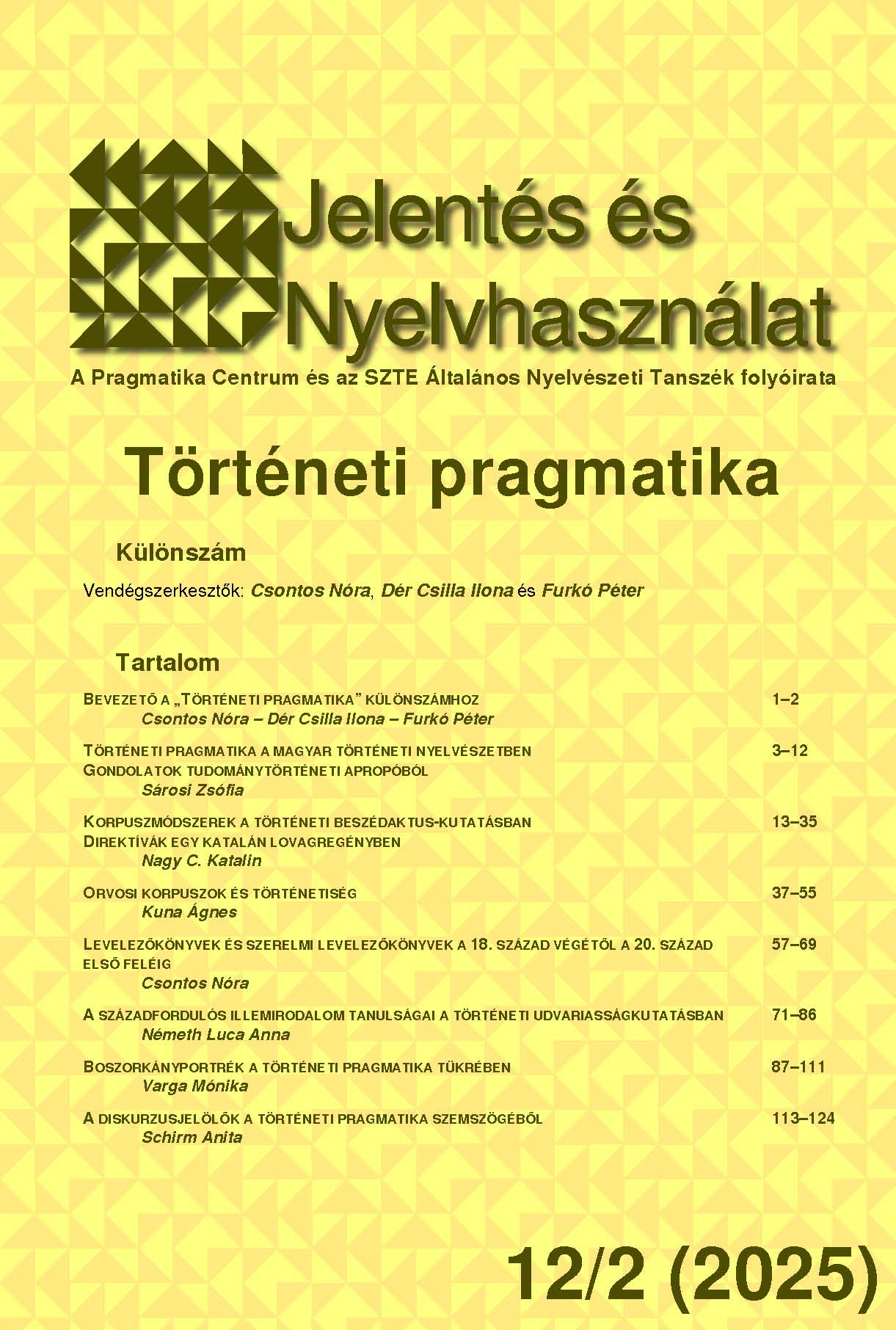Ámbár a világban léteznek szemantikai és pragmatikai témájú cikkeket megjelentető igen színvonalas folyóiratok, s ámbár Magyarországon is vannak elsősorban szemantikával vagy pragmatikával foglalkozó kutatók, kifejezetten szemantikai-pragmatikai profilú magyar nyelvű folyóirat pillanatnyilag nem létezik. Egy ilyen folyóirat tehát hiánypótló jelentőségű a hazai nyelvészeti kutatásokban.
Aktuális szám
Évf. 12 szám 2 (2025): Történeti pragmatika
2024. június 14-én a Károli Gáspár Református Egyetem adott otthont a 12. Pragmatika Kerekasztalnak Történeti pragmatika címen. A konferencia célja az volt, hogy átfogó képet nyújtson arról, miként alkalmazhatóak a pragmatikai kutatások módszerei és eredményei történeti szövegek elemzésében. A jelen különszám az ott elhangzott előadások alapján készült tanulmányokat gyűjti egybe.
Vendégszerkesztők:
Csontos Nóra
Dér Csilla Ilona
Furkó Péter
Megjelent: 2025-03-17

